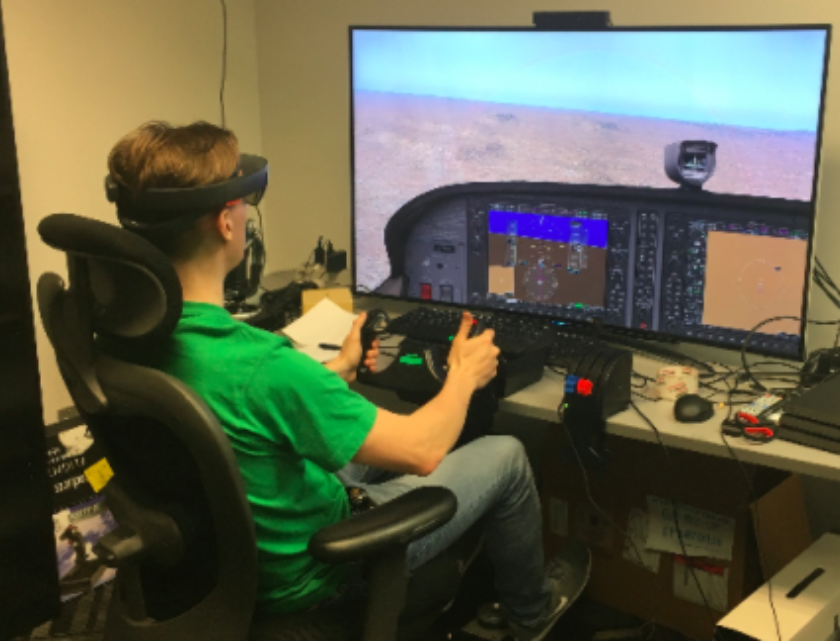Human factors and interfaces is the study and design of systems, products, and environments to optimize their usability and user experience. It involves considering human capabilities, limitations, and preferences to create efficient, safe, and user-friendly interactions between people and technology, enhancing overall usability and satisfaction.
Projects
Augmented Reality Procedure Assistance System for Operator Training and Simulation
This study explores the design, implementation, and evaluation of an Augmented Reality (AR) prototype that assists novice operators in performing procedural tasks in simulator environments. The prototype uses an optical see-through head-mounted display (OST HMD) in conjunction with a simulator display to supplement sequences of interactive visual and attention-guiding cues to the operator’s field of view. We used a 2x2 within-subject design to test two conditions: with/without AR-cues, each condition had a voice assistant and two procedural tasks (preflight and landing). An experiment examined twenty-six novice operators. The results demonstrated that augmented reality had benefits in terms of improved situation awareness and accuracy, however, it yielded longer task completion time by creating a speed-accuracy trade-off effect in favour of accuracy. No significant effect on mental workload is found. The results suggest that augmented reality systems have the potential to be used by a wider audience of operators.
